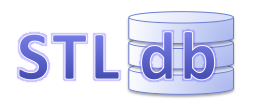
 |
STLdb is a C++ library which implements an ACID compliant database composed of STL containers. The data of the database is held within a shared memory region (shared memory, memory mapped file, etc.) which can be simultaneously used by multiple processes (all running on the same machine). The library provides direct (embedded) access to the database. Users directly manipulate the STL containers within the shared region, avoiding the overhead of inter-process communication.
When an STLdb database is used with a set of maps, it provides a key/value database which directly works with user-defined C++ data types. The data types must support Boost.Serialization, and must be capable of being stored in Boost.Interprocess shared memory regions, but are otherwise unrestricted. In this respect it differs from implementations which only work with data that is represented as arbitrary byte arrays.
The database is process-embedded because access if via the direct invocation of database routines. Processes using the database connect directly to the shared region containing the database data, and manipulate it within that region. Access to this region is properly synchronized, so that multiple process can simultaneous make use of an STLdb database at the same time.
The database is object-oriented because the contents of the database are simply one or more STL containers, which in turn contain application-specific data types specified as template parameters to the containers. You manipulate the database contents by manipulating these containers, and the data they contain, using their familiar APIs.
The database can be memory resident. A common practice with STLdb is to have the database use a managed mapped file for the shared region. This allows the managed file to persist beyond machine reboots, and to exceed the size of available memory, but alternatively, a database can also be specified to use a non-durable shared memory region, thereby guaranteeing that read-only operations will never incur disk I/O. Changes in either case are still written to write-ahead logs and database shapshots so that in the case that the shared region is ever lost, or corrupted, its contents can be recovered.
The database is fully ACID compliant. The acronym ACID refers to 4 essential characteristics typically desired in a database implementation: Atomicity, Consistency, Isolation, and Durability.
The STLdb database enforces the atomicity of all transactions. The transaction infrastructure allows the application to indicate the transactions that each change occurs under. The transaction is completed via an explicit call to either a commit() or rollback() method, which in turn guarantees that all of the changes in that transaction are either successfully performed (and logged) or that all changes are undone. The changes related to a transaction become visible to all other threads at a single moment in time.
The STLdb database maintains the consistency of the containers within it individually. Consistency constraints which apply across the containers are not handled by the STLdb database itself, and must currently be assured by the application code using the database. Future work may provide a way to represent constraints which apply across containers so that STLdb can enforce those constraints. Another approach for this is to make it possible to use boost::multi_index::multi_index_container, with STLdb, as that container would then manage the data relationships between the different views of the data which it manages.
STLdb provides isolation to the extent of isolation level 1 (read committed.) This means is that a thread reading the data will not see uncommitted changes that are associated with any other transaction. Some containers, like the stldb::map, provide multi-version concurrency control as part of their implementation, so that processes trying to read an entry in the map can always see the last committed copy of an entry, and are never blocked by in-progress changes.
STLdb also ensures the durability of all changes via write-ahead logging and checkpoints. When a transaction is committed, the commit processing perform write-ahead logging of all changes ensuring the ability to recover the transaction thereafter. In addition, applications can periodically checkpoint the database, writing out the container's contents to checkpoint files, and in the process, archive older log files. These conventions assure the durability of all data in the case that the shared region (memory mapped file, or shared memory region) should ever be corrupted by a failing process, or sudden machine failure.
Some additional features of STLdb: